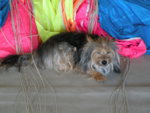Leaderboard
-
in all areas
- All areas
- Adverts
- Advert Questions
- Advert Reviews
- Videos
- Video Comments
- Blog Entries
- Blog Comments
- Images
- Image Comments
- Image Reviews
- Albums
- Album Comments
- Album Reviews
- Files
- File Comments
- File Reviews
- Dropzones
- Dropzone Comments
- Dropzone Reviews
- Gear
- Gear Comments
- Gear Reviews
- Articles
- Article Comments
- Article Reviews
- Fatalities
- Fatality Comments
- Fatality Reviews
- Stolen items
- Stolen item Comments
- Stolen item Reviews
- Records
- Record Comments
- Record Reviews
- Help Files
- Help File Comments
- Help File Reviews
- Events
- Event Comments
- Event Reviews
- Posts
- Status Updates
- Status Replies
-
Custom Date
-
All time
January 20 2016 - April 26 2024
-
Year
April 26 2023 - April 26 2024
-
Month
March 26 2024 - April 26 2024
-
Week
April 19 2024 - April 26 2024
-
Today
April 26 2024
-
Custom Date
05/22/2019 - 05/22/2019
-
All time
Popular Content
Showing content with the highest reputation on 05/22/2019 in all areas
-
3 pointsLooking at the JSON file, it does seem to be a direct dump of the GPMF data embedded in the MP4. Here's a collapsed view of what's in the file which shows the headers but not the data itself: Looking at the "GPS5" key, it seems to include only 5 values: latitude longitude altitude 2D speed 3D speed In addition, nested in the GPS5 data, it occasionally includes two more pieces of information: "fix" - This seems to be the GNSS fix type (3 for 3D, 2 for 2D, etc.). "precision" - If I had to guess, I'd say this is position accuracy in cm. That's not too bad. There are a couple of things missing compared to FlySight's data: Components of 3D velocity. In principle you can recover the vertical component from 3D speed and 2D speed, but there's no way to get north and east speed directly from this data. You would have to go through latitude and longitude, which will likely result in some additional error. Components of accuracy. FlySight includes horizontal and vertical position accuracy as well as speed accuracy. Number of satellites used in the fix. This can be a useful diagnostic, but there is arguably some overlap with the position accuracy figure reported in the GPMF data. I suspect at 18 Hz this is GPS only, for the reasons given above, but it may be that if you drop down to 10 Hz the unit will automatically switch over to GPS + GLONASS. Here's the relevant table from the u-blox M8 datasheet: Assuming their velocity is coming from the same place FlySight's is, I feel like the GoPro data would be just fine for most uses.
-
1 pointHi guys, I'm developer of Skyduck - the new mobile app for skydivers. I'm trying to make the best app for skydivers, so I need your help. First of all I need your feedback. Now it is in open beta test and available for iOS devices (iPhone 6 and higher except iPhone SE) DOWNLOAD FROM APPSTORE What it is now? • Easy-to-use automated skydiving logbook • Jumps digital signatures • 3D visualization of jump • Detailed statistics on a graph • Vertical/horizontal speeds Blue skies, Igor
-
1 pointWell, you can always put me on your 'ignore' list. That is one handy little doo-dad. Makes all the hassle of learning the new site functions worth it. Somebody has to be reasonable and sensible. Bill has been that 'voice' in the past, but lately he's just been bickering with the resident trolls. He's fallen into the 'I know you are but what am I?" trap. Many of the other 'reasonable' folks have left. I don't blame them. It's gotten pretty damned stupid in here of late.
-
1 pointIt's been a while since I checked the forums, but I came across this post and thought I'd add a little more information. The latest FlySight hardware uses the NEO-M8Q module, which supports 10 Hz update while tracking both GPS and GLONASS satellites, or 18 Hz while tracking a single GNSS constellation. There's nothing magical about 18 Hz, so I think the GoPro is probably also using a u-blox M8 chip. The main limitation with the latest FlySight hardware is processor speed. I haven't checked to see if we can run at 18 Hz, but it might be possible, especially if we disable audio output. However, I would say that we've seen some really good results with GPS + GLONASS tracking. Roughly speaking, this doubles the number of satellites in view, which makes the fix a little more accurate and a lot more robust. If I had to choose, I would probably go with 10 Hz and two constellations as opposed to 18 Hz and GPS only. My guess is that the GoPro is using GPS only at 18 Hz. This could be confirmed by looking at the number of satellites used in the fix (assuming this is reported). If you see a number around 8-12, it's likely GPS only. If you see a number more like 12-18, it's probably tracking GPS and GLONASS. There is one other thing I would pay close attention to. One of the things I like most about the u-blox module inside the FlySight is that it reports 3D velocity, so there is no need to calculate velocity from differences in position (which is notoriously error prone). This may very well be the same interface that the GoPro uses, but it's very common for consumer GPS units to use the NMEA interface instead. This is an old interface which doesn't have native support for 3D velocity, which means vertical speed needs to be calculated from differences in elevation. You can probably tell which method GoPro is using by looking specifically at vertical speed. How clean are the measurements? If you hold the GoPro in your hand and wave it over your head, up and down, etc., do you see clean velocity measurements on all three axes (even though position may not reflect that motion)?
-
1 pointLos Angeles - Dan Brodsky-Chenfeld remembers nothing about the airplane crash that nearly killed him, or the five weeks he lay in a coma afterward. What he does remember is that one of his best friends died on the skydiving plane that crashed 10 years ago last Monday. "It infuriates me," he says of the crash. "I'm still very good friends with his mother, with his sister. I see them and talk to them and it just kills me, that I had anything to do with it." In one of the worst accidents in skydiving history, the twin-engine de Havilland plunged to the ground during takeoff at Perris Valley Airport, killing the pilot and 15 skydivers. Brodsky-Chenfeld, 40, was among six survivors. He was coaching American and Dutch skydivers and had recruited some to come out to Southern California for training. Among the dead was his friend James Layne, whom he had taught to skydive in Ohio. Federal officials determined that contaminated fuel caused the right engine of the DHC-6-200 Twin Otter to lose power after takeoff. The pilot then made a mistake. The overloaded plane's right wing dipped and struck the ground. Witnesses said the craft bounced upright and then nose-dived, shearing off its nose and wings. Troy Widgery, 35, of Denver, recalls the aircraft was 300 feet in the air when it rolled over and he saw the ground out of the door. The crash knocked him out for several seconds. When he awoke, he found himself on top of bodies, fearful that the aircraft would catch fire. "I thought, well we lived through that and now it's gonna burn. Gotta get out of here. Everyone was either dead, dying or couldn't move." Widgery spent several days in the hospital with a broken hip, collarbone and other injuries. "I was jumping two months later. Once I could walk again, I was skydiving," he said. The skydiving school about 60 miles southeast of Los Angeles survived and has flourished, now handling about 10,000 student jumps a year. Pictures of the dead hang on the school walls, and there is a memorial park near the drop zone. On Monday, friends will gather there for skydiving and a barbecue. "It's an opportunity to be among people who truly understand our pain," said Melanie Conatser, co-owner of Perris Valley Skydiving. Brodsky-Chenfeld, of Chandler, Ariz., suffered a head injury, a broken neck, a collapsed lung and other internal injuries in the crash. He is "covered with scars" and still takes medication for back pain and other problems caused by his injuries. Yet he, too, was back to skydiving only months after the crash, following two major surgeries and with a brace around his neck. He has made 9,000 jumps since the crash, and started a championship skydiving team, Arizona Airspeed. "It's hard to ever consider a life that doesn't include that," he said. "It's really important that every day of your life you're doing something that really challenges you, something that you love to do." ~ Associated Press
-
Newsletter



